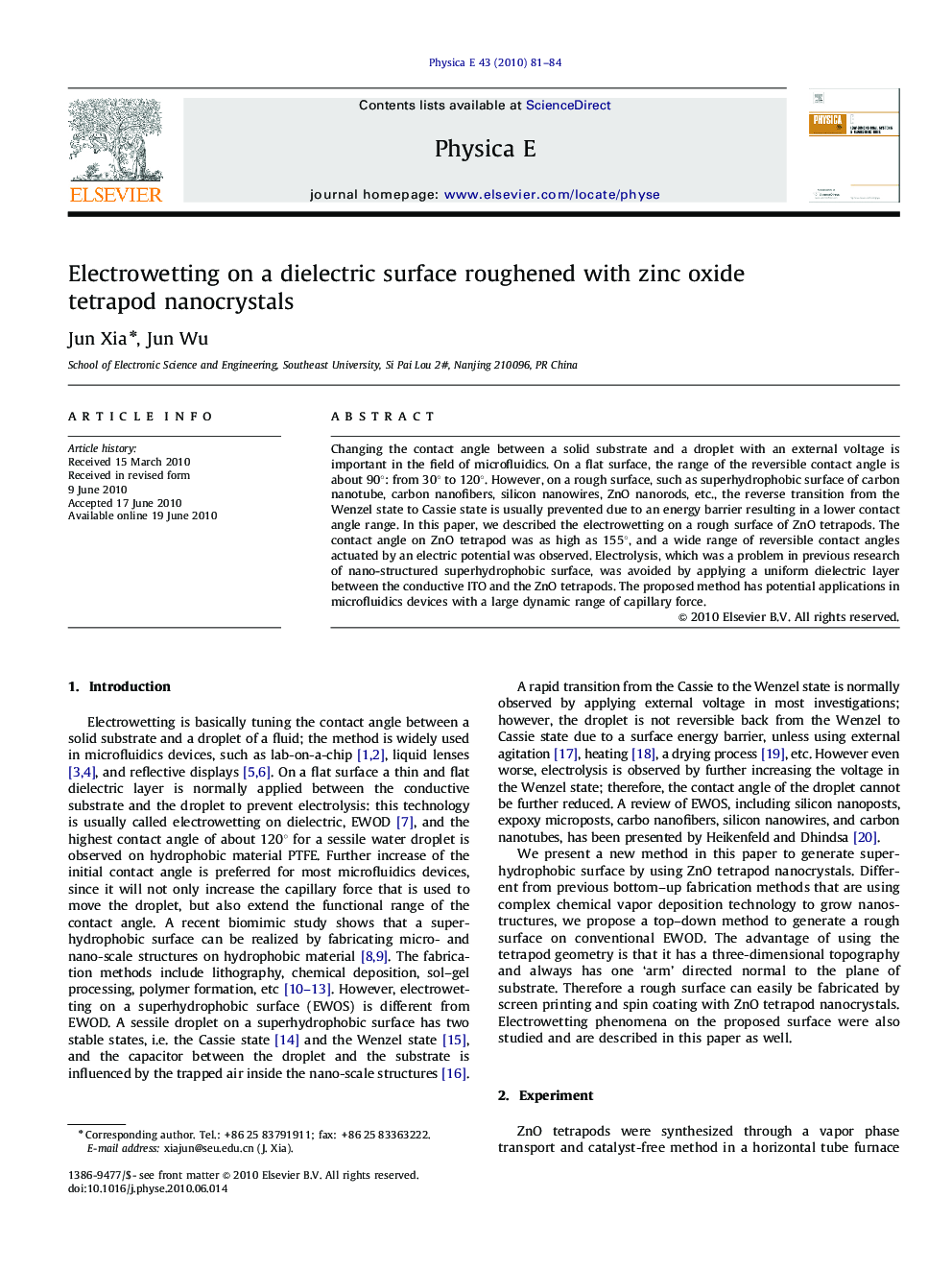| Article ID | Journal | Published Year | Pages | File Type |
|---|---|---|---|---|
| 1545491 | Physica E: Low-dimensional Systems and Nanostructures | 2010 | 4 Pages |
Changing the contact angle between a solid substrate and a droplet with an external voltage is important in the field of microfluidics. On a flat surface, the range of the reversible contact angle is about 90°: from 30° to 120°. However, on a rough surface, such as superhydrophobic surface of carbon nanotube, carbon nanofibers, silicon nanowires, ZnO nanorods, etc., the reverse transition from the Wenzel state to Cassie state is usually prevented due to an energy barrier resulting in a lower contact angle range. In this paper, we described the electrowetting on a rough surface of ZnO tetrapods. The contact angle on ZnO tetrapod was as high as 155°, and a wide range of reversible contact angles actuated by an electric potential was observed. Electrolysis, which was a problem in previous research of nano-structured superhydrophobic surface, was avoided by applying a uniform dielectric layer between the conductive ITO and the ZnO tetrapods. The proposed method has potential applications in microfluidics devices with a large dynamic range of capillary force.
